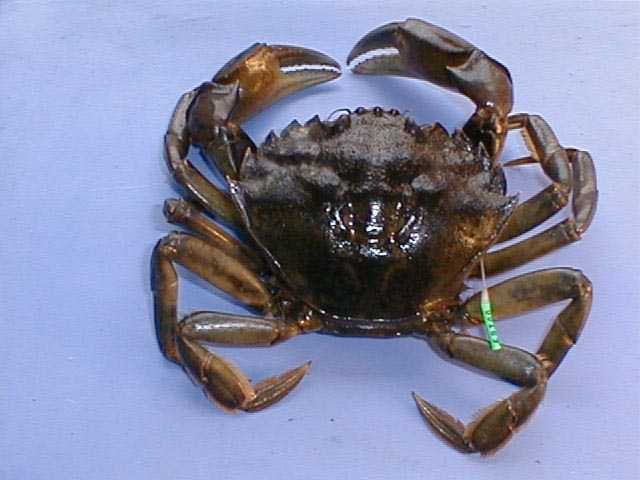Introduced Species in Oregon Estuaries
John Chapman, Hatfield Marine Science Cent., 2030 S. Marine Dr. Newport OR 97365
Sylvia Yamada, Zoology Department, Oregon State University, Corvallis OR 97331
Steve Rumrill, Oregon Institute of Marine Biology, PO Box 5417, Charleston OR 97420
1999 OSU Marine Resource Management Class
|
Introduced, or nonindigenous, species are a major threat to biodiversity worldwide. Large estuaries and embayments are particularly vulnerable to colonization by new species. Over 230 nonindigenous species have established themselves in the San Francisco Bay estuary. Not only do these exotic invaders displace native species, they also alter habitat structure and energy flow through ecosystems. For example, the Atlantic marsh grass Spartina alterniflora spreads by runners and traps sediment in its roots. Over time, this invader can transform a mudflat to a high marsh. The European green crab Carcinus maenas preys on small native clams, worms and juvenile flatfish and competes for food with native crabs, fishes and migratory seabirds. How do these nonindigenous species get to our shores? While aquaculture species such as the Japanese oyster, Crassostrea gigas, were introduced intentionally, they also brought with them many undesirable hitchhikers, including oyster drills. Bait worms and lobsters from the Atlantic are routinely shipped to the west coast wrapped in seaweed that harbors many small organisms, including snails and young green crabs. Once the seaweed is discarded into our bays, these foreign species can take up residence and establish new populations. Commercial ships, transporting large volumes of ballast water from one port to another, act as vectors for introducing planktonic organisms. The purple varnish clam, Nuttallia obscurata, was probably transported in ballast water from Japan to British Columbia before 1993. By 1997, it spread to Oregon, presumably via natural transport of larvae by ocean currents. Unlike chemical pollutants, introduced species reproduce and once established, are extremely difficult, if not impossible, to remove. Who are the Invaders in Oregon Estuaries?Our goal is to summarize the present knowledge of nonindigenous species in Oregon estuaries. The list of exotic species is primarily based on surveys conducted by Jim Carlton (Coos Bay), John Chapman (Columbia River and other estuaries) and the US Environmental Protection Agency (Yaquina Bay). These studies provide evidence that well over 100 invaders have become established in Oregon's estuaries. It should be noted, however, that this figure is an underestimate because most estuaries, habitats and taxonomic groups have not been systematically sampled. For more information see: |

European green crab with numbered tag.
This web page was created by Sylvia Behrens Yamada in November 2001 and updated in November 2003.
Send your comments for the next version of Introduced Species in Oregon
Estuaries to:
yamadas@science.oregonstate.edu